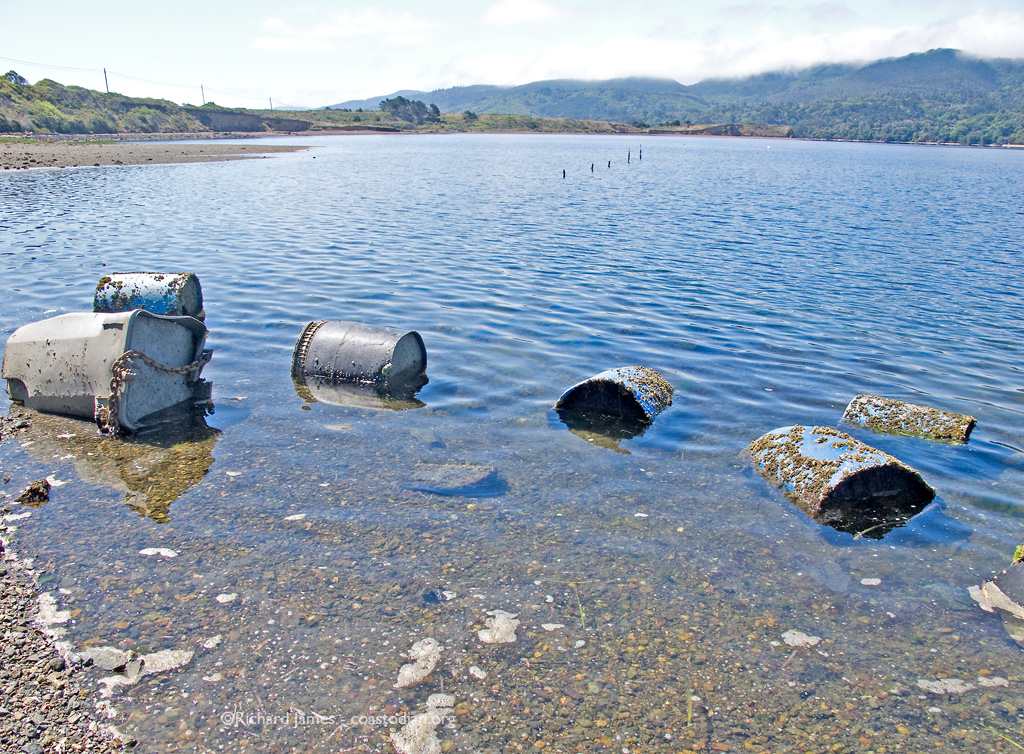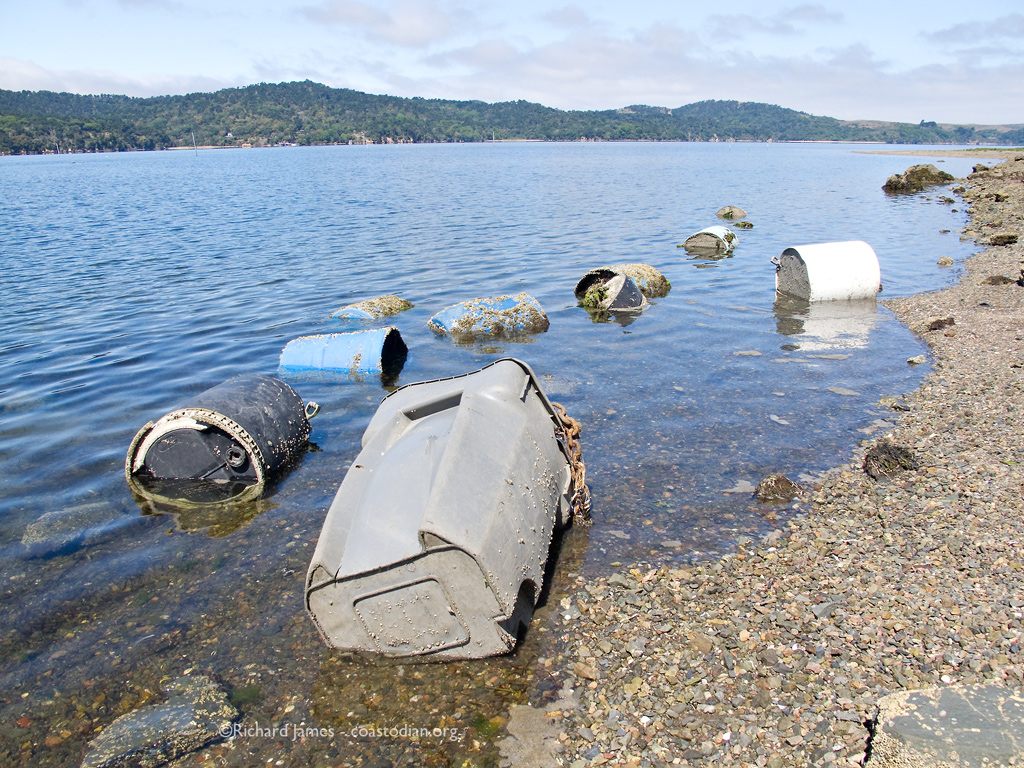Click on the words above “Save our Tomales Bay – Part 24 Whence cometh the detritus” to see this entire post.
Over the past few years of working with local oyster farmers to improve their processes in order to leave less trash in our local waters, I’ve heard them say more than once “When we go out on our yearly trash pickups, we always find more non-oyster trash than oyster farm trash.”
Let’s look at this statement in more detail.
Yearly litter pickups.
Look at the image below of a grow-out bag nearly obscured by pickleweed in less than 3 weeks at the mouth of Walker Creek.
click on image, then click once more to see a much larger version.
Imagine if the growers came out a year later to look for this bag. Do you think they would have found it?
I had scoured this same area less than three weeks previously and that bag was not there.
No wonder the growers don’t find much oyster trash on their yearly cleanups, nature has enveloped their mess, making it invisible to their efforts.
Growers need to go out every two weeks in order to keep their mess from becoming a permanent part of the very same ecosystem they extract profit from. They need to walk the shores, as I do. At Hog Island Oysters and Tomales Bay Oyster Company, efforts to redesign gear to avoid these losses are underway, a good thing.
.
Now let’s look at my cleanup efforts from two consecutive weeks along the shore from Preston Point to the fence at the Audubon Canyon parcel at Tom’s Point, as well as a small section of the Point Reyes Oyster Company lease at Walker Creek.
NOTE: click on an image, then click once more to see a much larger version.
May 3rd

Alleged non-oyster litter collected on 3 May, 2015 along coast from Preston Point to Audubon Canyon Ranch parcel.
.

Alleged oyster litter collected on 3 May, 2015 along coast from Preston Point to Audubon Canyon Ranch parcel. Large zip ties found on beach adjacent to Hog Island lease at Tom’s Point. 53 abandoned oyster grow-out bags were also located, 26 of which hauled out.
To the above items, add 53 grow-out bags, a very large volume of high-density polyethylene being ground into tiny bits by sand, wave and wind.
.
May 10th

Alleged non-oyster litter collected on 10 May, 2015 along coast from Preston Point to Audubon Canyon Ranch parcel.
.

Alleged oyster litter collected on 10 May, 2015 along coast from Preston Point to Audubon Canyon Ranch parcel. Plastic coated copper wire found under Point Reyes Oyster Company racks, large zip ties found on beach adjacent to Hog Island lease at Tom’s Point. 154 abandoned oyster grow-out bags were also located, 41 of which hauled out.
To the above items, add 154 grow-out bags, a very large volume of high-density polyethylene being ground into tiny bits by sand, wave and wind.
The ratio of “tourist” trash to oyster trash varies over the year, depending on weather and visitation.
If you don’t look for it, you won’t find it! Oyster growers need to get out of their boats more often, they will find what I find if they are willing to walk the shore and mudflats and look.
.
A list of proposed best practices I drew up was submitted to the Fish & Game Commission in April at their meeting in Santa Rosa. Both Hog Island Oysters and Tomales Bay Oyster Company are in the process of redesigning their gear, both of which I applaud. With better gear to withstand the beating doled out by sun, wind and waves, less of this gear will go missing, which means a healthier ecosystem for all.
Let’s hope this trend continues, for earth’s sake.
.
Next related post may be found here.
Previous related post may be found here.
See the first post in this series “Save our Tomales Bay” here.



















